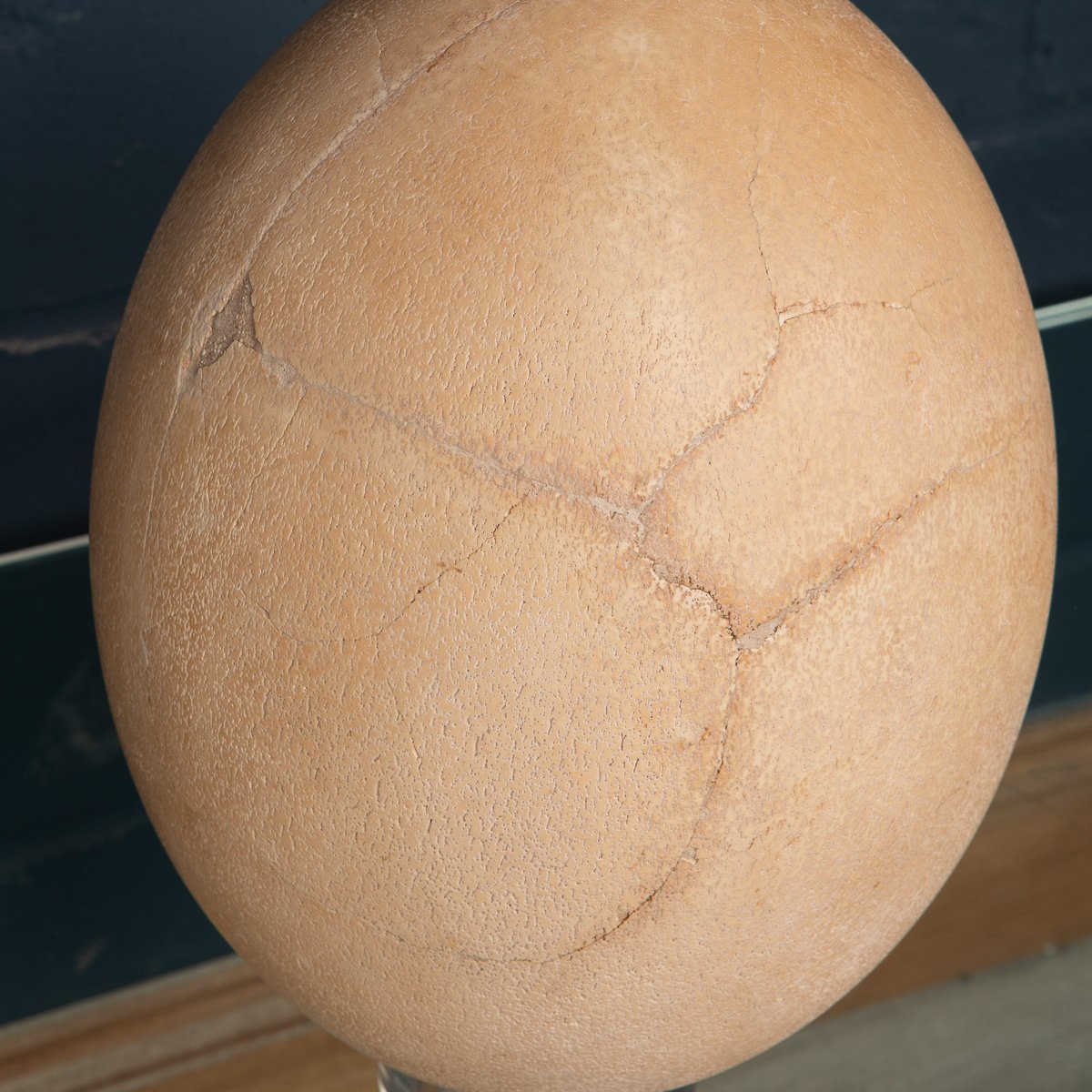ANTIQUE PRE-17thC EXTREMELY RARE & COMPLETE ELEPHANT BIRD EGG, MADAGASCAR
An extremely rare elephant bird egg, completely intact. The Elephant Bird, formally categorised as Aepyornis Maximus, is an enormous flightless bird native to Madagascar. Standing as high as 3.4 metres and weighing up to 500kg, the Elephant Bird was undoubtedly the largest bird ever to have lived. Compared to even the largest modern ostrich (up to 8 feet high and weighing 300lbs) it was far taller and thicker-set with its far more muscular legs. A comparable species in terms of size is the Moa of New Zealand, which are also now extinct. The Elephant Bird roamed the plateaus and forest of Madagascar until their extinction sometime between the 14th and 17th centuries.
Reference Number: B7680/G2166
DESCRIPTION
An extremely rare elephant bird egg, completely intact. The Elephant Bird, formally categorised as Aepyornis Maximus, is an enormous flightless bird native to Madagascar. Standing as high as 3.4 metres and weighing up to 500kg, the Elephant Bird was undoubtedly the largest bird ever to have lived. Compared to even the largest modern ostrich (up to 8 feet high and weighing 300lbs) it was far taller and thicker-set with its far more muscular legs. A comparable species in terms of size is the Moa of New Zealand, which are also now extinct. The Elephant Bird roamed the plateaus and forest of Madagascar until their extinction sometime between the 14th and 17th centuries.
Perhaps unsurprisingly given their gargantuan size, the Elephant Bird was originally believed to have been the giant flying beast known as the Roc (or Ruhk). This legendary bird of prey is perhaps a distorted version of Aepyornis Maximus, immortalised in the tales of Sinbad and accounts of Marco Polo's voyages. In Sanskrit epics the mythic bird Garuda carried a battling elephant in its talons, which is how the species received its colloquial name. Despite this association, the Elephant Bird’s diet instead comprised forest fruits.
The egg of an Elephant Bird is a seldom seen specimen. Rarer still are examples with complete and intact shells like the present lot. Fewer than 40 such eggs populate public collections around the world. One reason for the rarity of these eggs would have been their culinary appeal for the human settlers of Madagascar. A single Elephant bird egg could easily feed a large group, and as a result they were highly sought after for nourishment. Their redefined status as a desirable food source for humans almost certainly contributed to their extinction. These curved eggs, with their cream or pale hues and gently perforated shells, are not only visually beautiful, but an enduring symbol of a creature revered in both science and legend.
This is one of then largest examples to have ever come on the market and it is in sublime condition. For any enthusiast of Wunderkammer (chamber of curiosities), the natural world, or simply a collector of ultra-rare items bound to appreciate in value over time, this is an item worth looking to invest in. Sir David Attenborough was given an elephant bird egg whilst in Madagascar over 40 years ago but even the one he owns is not an intact one. Almost all the elephant bird eggs being traded around the world today are made up of sections of egg pieced back together. Eggs like those in possession of Sir David Attenborough are still very much sought after as (despite being broken) they have been put back together using only a few pieces of the original egg. The more pieces that have been used the lesser the value. It is so rare to find a whole egg, never before been broken, that they command seriously high prices when they change hands today. The world record price at auction for one of these eggs was achieved in 2014 when Christies, London sold for £122,500 (Travel, Science and Natural History Sale, 10th April 2014).
Comparative literature: Balanoff, A.M. & Rowe, R., ‘Osteological Description of an Embryonic Skeleton of the Extinct Elephant Bird, Aepyornis’, Society of Vertebrate Paleontology Memoir, Vol.9 (2007) Fig.6, p.9"
CONDITION
Most of the eggs that are available on the market are reconstructed using dozens, sometimes hundreds of pieces, more often than not from multiple similar examples. Although this example was clearly broken when discovered, it has been sympathetically restored and it can be seen that it has NOT been restored using multiple sections from other similar examples. We have taken multiple photographs to show how this example is indeed complete albeit not intact.
SIZE
Height: 32cm
Width: 22cm













































